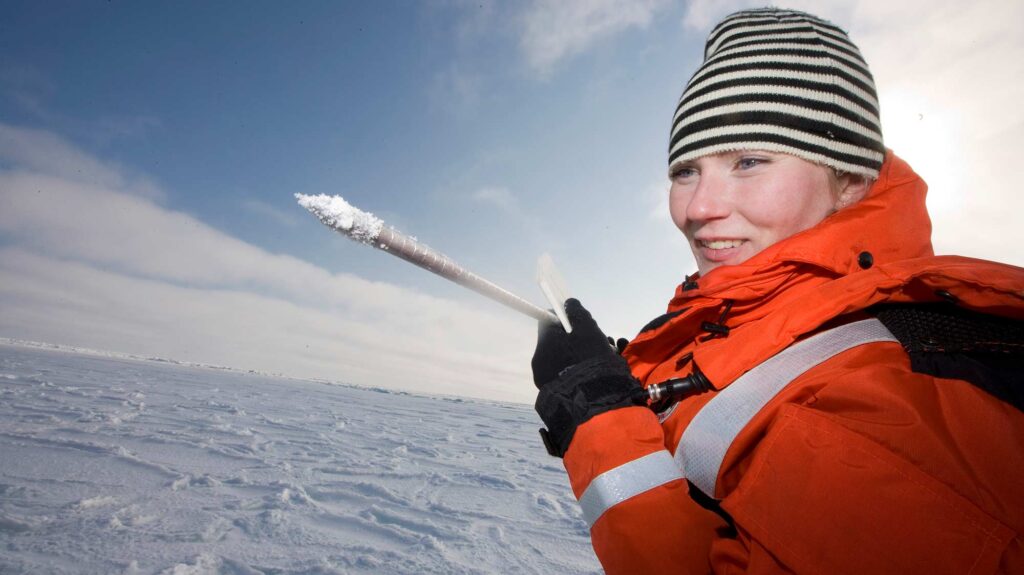Oceans are warming and sea ice is declining. It’s the consistent and disturbing trend that polar scientist Karen Frey has studied for years in the Arctic region. “It’s really important to reiterate that climate warming has been rapid and persistent in the Arctic over the past several decades, with profound and fundamental shifts across the region as a result,” says Frey, a professor of geography.

“Can ecosystems bounce back?”
The Arctic of the future figures to be warmer, stormier, and greener than ever imagined, says Frey, a longtime contributor to and a lead author on the Arctic Report Card, established by NOAA two decades ago as an annual compilation of original, peer-reviewed environmental observations and analyses of a region undergoing rapid and dramatic alterations to weather, climate, oceanic, and land conditions.
As vice chair of the Marine Working Group of the International Arctic Science Committee, Frey meets international colleagues annually at the Arctic Science Summit Week to share data that deepens the collective understanding of the dramatic impact fast-moving climate change is making on the region.
Frey’s summer field research in the Arctic—many times involving Clark graduate students—has examined the impacts of warming and sea ice decline on marine ecosystems in the Bering and Chukchi seas. The Bering Sea has experienced unprecedented declines of sea ice.
“I think it’s really important to understand the consequences of that kind of stark drop-off of sea ice,” says Frey, whose research has been funded by NSF, NASA, NOAA, and the Office of Naval Research. “Seawater temperatures became very warm and the temperatures of bottom waters that come into contact with the seafloor also became very warm. I think one big question is what is the resilience of the ecosystem to events like that? Can ecosystems bounce back if we have a subsequent cold winter or are there long-term consequences of those rapid sea ice decline and warming events?”

